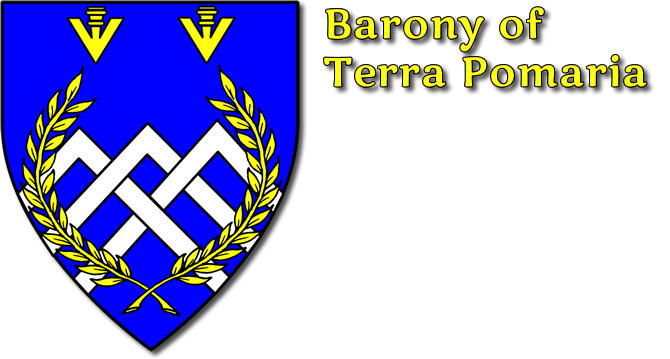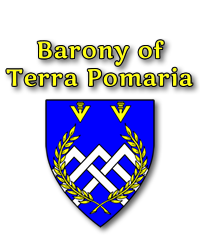19 Nov Sauteed Mutton
Then Serve It Forth…
By Lady Rosemary Willowwood de Ste. Anne
November is slaughter season, and what better way to celebrate it than to see how the Italian culture treated its “senior citizen” sheep?
“Meat Sardemone” (Sautéed Mutton)
From Libro della Cucina del secolo XIV
Franceso Zambrini, ed., Bologna, 1863
Translation by Odile Redon, Francoise Sabban and Silvano Serventi
in The Medieval Kitchen
Togli carne di castrone, del petto, taglia minuto, e fà bulliere forte; e quando sirà bullita, acciò che non sapia di beccume, leva via l’acqua e friggi la carne col lardo; poi mettivi su abbastanza di quella aqua, in tanto che poco rimagna di quello brodo; e quando siranno cotte, mettivi su coriandoli e carotr bene trite con spezie e zaffarano abbastanza. E se non avessi coriandoli, mettivi del comino, e mangia.
TRANSLATION: Take flesh of mutton, from the breast, cut it small and boil it well; and when it is boiled so that it no longer has a high odor, remove the water and fry the meat with pork fat; then add enough of that water so that little remains of the broth; and when this is cooked, add coriander and chopped carrots, with spices and sufficient saffron. If you have no coriander, add cumin, and eat it.
REALIZATION: This dish can be made with lamb stew meat, since it is not easy to find real mutton these days. If lamb is used, the preliminary boiling step cam be eliminated. I will realize this recipe using lamb, with comments about adjustments for mutton (if you are fortunate enough to find a source for it) listed below.
Cut about a pound of lamb into one-inch cubes. If you wish to use breast of lamb, which the recipe recommends, have the butcher cut it into serving pieces. This cut will be rather like short ribs in beef, and contains small ends of rib and an unexpectedly large amount of fat.. Render about two ounces of rinsed salt pork until the fat is rendered, but the pork bits are not browned. If you do not want to use salt pork, about four pieces of bacon may be used instead. If you are unalterably opposed to frying in animal fat, olive oil may be used, but the result will not be as rich. Sauté the lamb in the rendered fat until gently browned, but not crusty. Add about 1 cup of strong stock, chicken or beef. Bring to a gentle simmer, covered, for about 1 hour, or until the meat is tender. About halfway through the simmering, add 1 cup peeled and chopped carrots, ½ tsp. saffron threads, and 1 tsp. each of ground coriander and “strong spices” (see glossary). Stir gently, add stock only if necessary, and continue simmering until tender. The idea here is to have cooked carrots and tender lamb, but not a lot of stock left at the end of cooking. Check the level about 15 minutes before you think the dish will be dome, and if it looked too “soupy”, remove the cover to reduce the liquid. Adjust seasoning, and serve. You may add salt, but only after tasting. If you used either salt pork or commercial stock, I doubt any will be needed.
If you are fortunate enough to find mutton, cut the meat into cubes or riblet portions as above, cover with water in a saucepan, and gently simmer for about 15-20 minutes. Drain all the water (now mutton stock), and proceed with the recipe, browning the boiled mutton in the fat. Use some, but not all, of the stock to simmer the mutton. Mutton broth can, indeed, be very strong in smell, most of which comes from the fat. Part of the point of the parboiling is to melt off a good deal of the strong-smelling fat from the meat, so skim the stock thoroughly when you drain the meat. Mutton has an undeservedly bad reputation, and as late as the turn of the last century, was considered to be as delicious and nutritious as beef. There are quite a number of recipes for mutton in the original Boston Cooking School by Fannie Merritt Farmer (1896).
Coriander with meat is a common French combination, but the authors of The Medieval Kitchen state that the recipe is not found in any French source. Cumin AND coriander, however, is much more common in Arabic and Spanish cuisines. The author of the original Italian recipe suggest cumin as an alternative to coriander. If you don’t know which to use, separately crush some of both spices, and smell one in your hand while standing over the open pot.. Don’t like the combination? Then try the other (but use the other hand!). Season the dish with the one you find most pleasant. Or be Arabic, and combine the two!
If you have not already made up your own proprietary mixture of “strong powders” to use in cooking, I recommend for this recipe that you use equal amounts of pepper, cinnamon, ginger, and cloves. If you adjust, lean toward pepper and away from cloves.
GLOSSARY:
Pouder fort: literally “strong powders”. A mixture of spices kept on hand that varied with the cook’s preference, and usually contained cinnamon, but also some of the stronger spices like pepper, cardamom, cloves, and grains of paradise or cubebs.



